On our lookout for offbeat things to do in West Bengal, we landed up at Sonajhuri Khoai Haat (Khoaier Haat). This is a rare artisan’s market in India that is assembled in a forest! There is shopping for clothes, art, listening to Baul music, and shaking a leg with Santhal dancers – all below the open sky. It is a heady experience, to say the least!
Contents
What is Shantiniketan famous for?
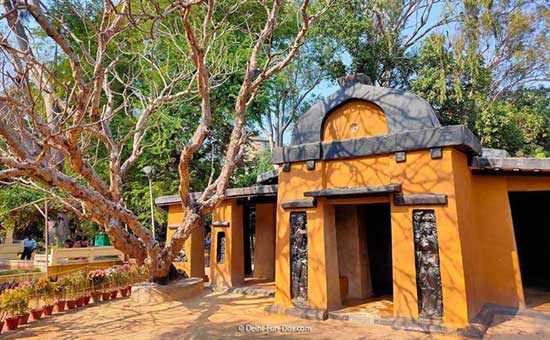
Rabindranath Tagore’s abode as well as Visva Bharati University, an academic institution Tagore created based on world philosophy.
Some people think Tagore’s Shantiniketan is steeped in time. Like a juggernaut that refuses to move. Such was our notion of Shantiniketan too. Bedabrata between us had been there as a child. The open Visva Bharati campus left a strong impression on his mind. But when we visited recently, there were so many more things to do in Shantiniketan than just the University. Bedabrata was surprised. The Rabindra Bhavan Museum and the Visva Bharati University are still the must-visit places in Shantiniketan. However, there are many offbeat places near Shantiniketan that a traveler may miss if they do not have prior knowledge.
One such Santiniketan secret is the Sonajhuri Haat, aka Khoai Haat, aka Shonibarer Haat.
Khoai Haat
Shantiniketan is about 160 km from Kolkata. But the topography here is completely different. If you drive for about 3 hours from Kolkata, the scenery changes to a drier terrain. It is hot but far less humid. What strikes the eye most is the red soil that almost sets the place on fire. The distinctive red laterite soil of this region gives it the epithet “Ranga Matir Desh” or the “Land of Red Soil”.
Set on such topography, a few kilometers from Visva Bharati University is an arid land locally called Khoai. It is the area surrounding the Kopai River and much of the soil has eroded because of the wind and water. “Khoai”, loosely translated would mean “lost”. To give this area some forest cover, acacia or Sonajhuri trees were planted and it is now a greener area. The Sonajhuri trees not only help to control further soil erosion but the brown and green against the red landscape creates a beautiful picture. Tourists would come here to enjoy the beauty. Santiniketan is a weekend destination from Kolkata so Saturdays would record the highest footfall.

Shantiniketan is a rich resource for traditional as well as contemporary handicrafts and maybe we shall write a separate post on that someday. Tagore took an active interest in the local arts and crafts and started vocational training programs here. The good work was also encouraged by the Fine Arts department or Kala Bhavan, Santiniketan. As a result, some form of art or craft is like a household industry here.
Seeing the business potential, a few of the more enterprising craftspeople started setting up temporary shops, or what we call “pop-ups”, every Saturday afternoon on the grounds of the Sonajhuri forest. They would sell paintings, unusual pieces of art, colourful jute bags, fun terracotta puppets, some Dokra figurines, and so on at a very reasonable rate. Visitors would get interested, buy a few souvenirs, and talk to others about this amazing flea market in the forest. This was the scenario a decade ago – about 20 to 25 sellers on Saturday afternoon.
The fame of the market grew and that brought more sellers here. The place has an identity – “Khoai Haat”, Haat meaning a village market. When we visited this place in February this year, we faced a traffic jam given the large number of cars and battery-operated rickshaws that had brought tourists. The market was now at least 2 kilometers long and had proper signage. We could hear the buzz from a distance. The metamorphosis was very surprising. But then, it is illogical to expect that Santinekatan would be preserved in a time bubble and we too set forth to visit the new attraction.
How to reach Sonajhuri forest for Khoai Haat
Most people come to know about Khoai Haat once they have reached Shantiniketan. It is few kilometres from the university campus and can be reached via battery-rickshaw or cycle-rickshaw, the most popular mode of commute here. Some people choose to drive and given the decent roads, that is an option too. The nearest railway station to Sonajhuri Forest is either Prantik or Bolpur. You can take a rickshaw or any similar mode of transport to reach the forest. You can also engage the vehicle to wait and drop you back after you have visited the Haat.
What to do at Khoai Haat
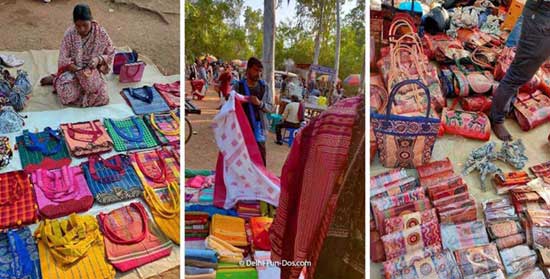
The primary activity is shopping. It is a great resource for pocket-friendly shopping in Shantiniketan. There were hundreds of stalls selling saris, other clothes, and bags adorned with Kantha stitch, a popular embroidery style from Bengal, Batik, a wax-resist dye painting style was probably the next draw. That apart there were accessories and ornaments; simple furniture and knick-knacks made of wood or terracotta; jute bags and mats; clay puppets and bags, wallets, and boxes with batik on leather, a popular art form in Shantiniketan. Most of the sellers were producers themselves and they were keen to talk about their stuff. They wouldn’t mind inviting you home as well. We didn’t shop much. We bought beautifully designed batik–leather candy boxes as souvenirs. Also, an artisan was sitting and carving images on slate boards. We loved this contemporary twist to art and bought a slate carving with cartoon-like musician figures.
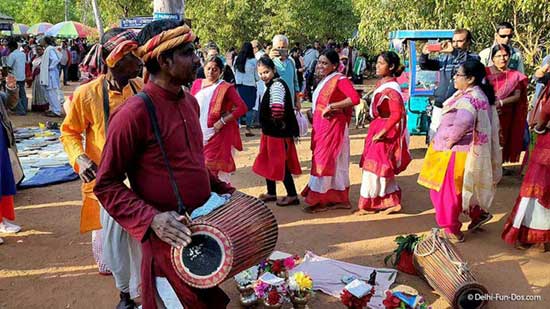
But there is more to this place now than just shopping. There are many folk music forms in this part of Bengal. We heard roaming minstrels of Bauls singing at a corner. At a more central place, a local Santhali troupe started dancing. The women swayed holding hands while the men played the madol drum. Some tourists also joined them. No judgment – they just looked so happy at that moment.
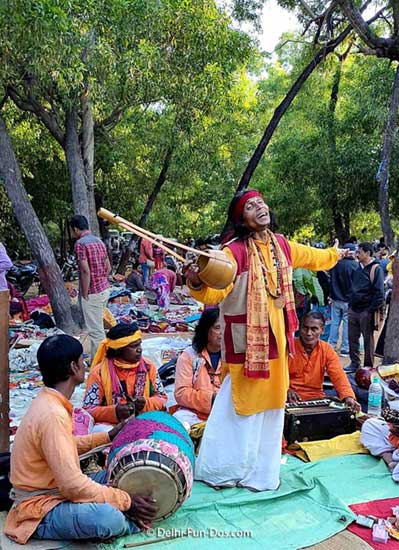
The initial Khoai Haat had no food and not even tea which is very unusual in Bengal! Khoai Haat now has snack stalls, tea sellers, and ice cream vendors. Few resorts have come up in the adjacent area and they have cafeterias here as well.
Khoai Sonajhuri Haat day
A village market, or a Haat, often doesn’t sit every day of the week. They have specific days. True to this tradition, Khoai Haat, as we mentioned, was just a Saturday afternoon activity. It was targeting tourist influx on Saturdays. That is why it is also called “Shonibarer Haat” or the Saturday market.
However, the full-blown Haat now sits on Saturdays as well as Sundays. In fact, some sellers set up their stalls every day of the week. So whenever you go, you are not disappointed.
Santiniketan Khoai Haat timing
The only factor that has not changed since its inception is that there is no electricity in this area. Also, no permanent podium or roofed structures have come up yet. So the market takes place only during daylight hours. Khoai Haat starts at about 3 in the afternoon and continues till about 5.30 or 6 in the evening. During summer evenings, when the sun sets late, the Haat can continue till 7.
Best time to visit Santiniketan Khoai Haat
Santiniketan in the Birbhum district of West Bengal is known of extreme weather. The summers are very hot. Given that Khoai Haat is an outdoor activity, it may be difficult to cover this market in summer. Santiniketan looks very beautiful in monsoon. But, since Khoai Haat has no covering, the sellers do not assemble if it rains. Autumn, winter, and spring are the best seasons to cover this spot.
The first Khoai Haat was a very different experience. There was hardly any crowd of sellers of buyers. But it is now a full-fledged commercial venture. While we have mixed feelings, we are inclined towards liking the new experience too. In its new avatar, this market provides opportunities to more craft people and in fact, serves the visitors with an eclectic experience of shopping, music, dance, and food. The market is still in a jungle, on the ground, and below the open sky. That itself is a unique experience and no one can take that away from Sonajhuri Shanibarer Khoai Haat.
PIN IT FOR LATER READ


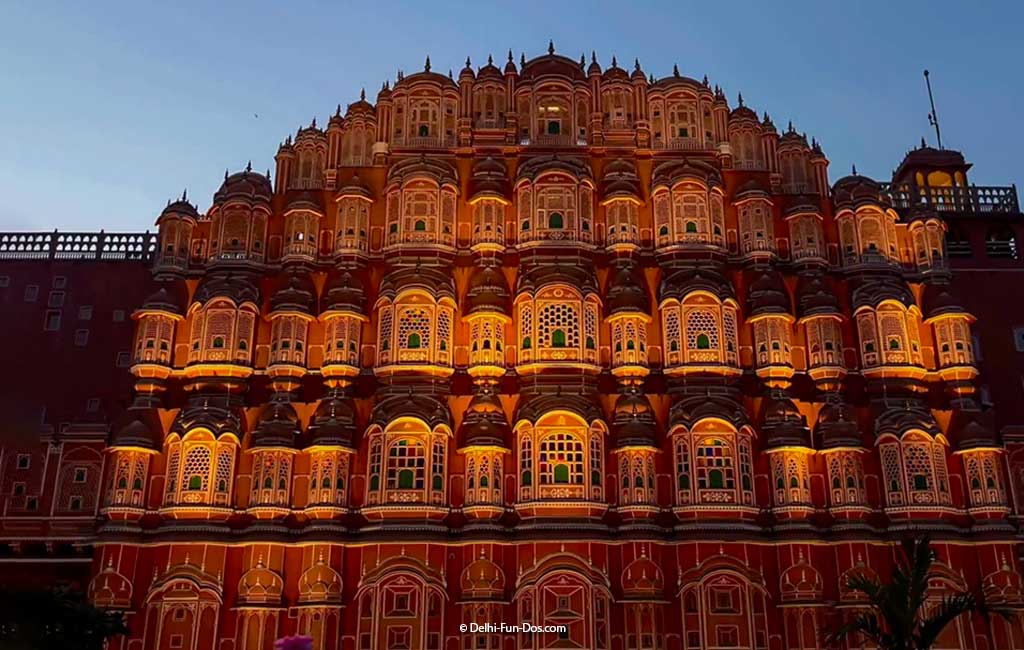

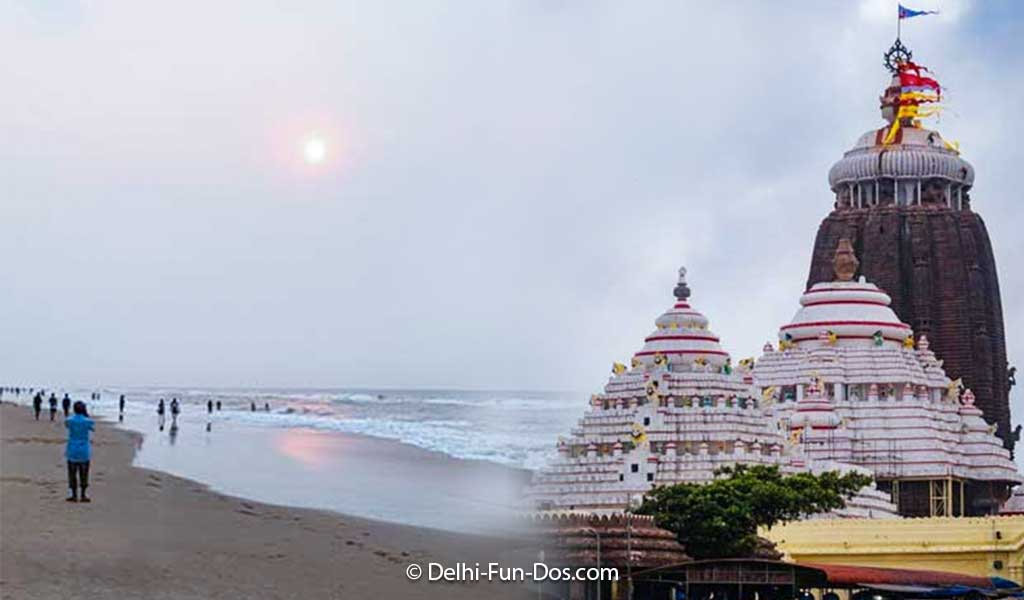
Being a half bong, I can completely feel the essence of your article. Shantiniketan is a very famous place not only for its Visva Bharti University but also for its hospitality. The locals are very humble and polite. They never misguide the tourists. Although they sometimes over charge some of the souvenirs but I find it all okay.. after all this is for livelihood.
🙂
Good to see Shantiniketan in your blog.
This place is so vibrant and full of colors, life, music and good food to make the trip worthwhile
Your post reminds me about Surajkund mela. The colors, vibrancy and the energy levels are just amazing!
Your travel stories are so unique and insightful. I would love to visit Khoai Haat someday and purchase some items like batik – leather candy boxes. I would also love to try the local food.
This place looks so amazing to visit! The food, culture and festivities look so awesome! I would love to go here!
Kileen
This looks a lot more than shopping… its an experience. The photos are calling me to visit this place and feel it.
Thanks for sharing this offbeat places to do in Bengal.
My in- laws are from Bengal, so may b I can plan to visit Shantiniketan & travel to this place to witness this haat.
Photos are wonderful.
looks beautiful! I would love to shop and hunt the best bargain. Makes me want to travel again so much!
This bazaar seems really nice and interesting! Looking forward to visiting sometime and seeing all the wonderful crafts as well, thanks for sharing this post with us!
Oh my goodness it’s all so COLORFUL. This makes me so insanely happy.
I haven’t heard of this place,but it seems so interesting and I love the way you share about it.
The title of this article had me intrigued–a bazaar in a forest??? That is sooo cool!!! And there were such beautiful things at them and so much activity! I would love to go.
Wow this place looks so colourful and vibrant. I had never heard of Sonajhuri Khoaier Haat before, maybe that is because I have not been to West Bengal many times. I have just added this to my list and I will ensure I visit it the next time I plan for West Bengal.
Though I’ve not yet been to West Bengal, I dream of being able to go after the pandemic settles. It looks like it would be such an incredible place to visit and explore.
Baul music is my favorite form of folk music/dance. This Haat looks so much fun! I wish to visit someday!